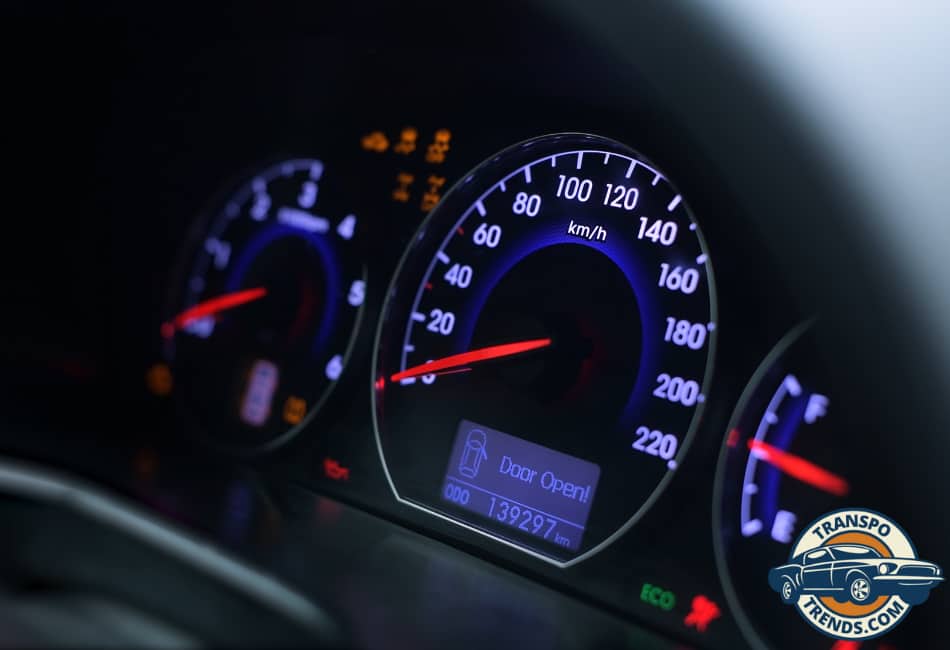Dashboard lights are like the tell-tale heart of your vehicle, providing valuable information about various aspects of your car’s health. But what happens when these lights dim every time you start your car?
This seemingly small issue could be a signal of more significant underlying problems. In this blog post, we’ll delve into the seven most common reasons why your dashboard lights may dim when starting your car.
We aim to provide you with a thorough, easy-to-understand guide to help you troubleshoot this issue and keep your vehicle running smoothly. Buckle up, and let’s get started!
Reasons Dashboard Lights Dim When Starting Car
1. Battery Load
A car’s battery provides the necessary power for all electrical components, including the dashboard lights. When you start the car, the starter motor requires a large amount of current, which is provided by the battery.
This sudden demand for a high electrical load can cause the dashboard lights to dim momentarily. It’s a normal occurrence if the dimming is slight and lasts only for a second or two. However, if the lights dim significantly or stay dim for a longer time, it could be a sign that your battery is weak or old.
Over time, batteries lose their ability to hold a charge and may struggle to provide the necessary power for all components, causing the dashboard lights to appear dim.
Keep an eye on the condition of your battery, and consider getting it tested or replaced if you notice excessive dimming of dashboard lights.
2. Starter Motor Draw
A starter motor is an essential component of your vehicle that cranks the engine and makes it start running. The starter motor draws a high amount of current from the battery to turn over the engine and get it running.
This process, called the Starter Motor Draw, is where the starter pulls in energy from the battery, usually between 100 to 200 amps, depending on the type of vehicle and the engine’s size.
When you turn the ignition key to start your car, this high current flow to the starter motor can cause a momentary drop in the power available to other components of the vehicle, including the dashboard lights.
That might result in the lights dimming for a split second. However, if this dimming becomes more noticeable or lasts longer, it could indicate a problem with the starter motor itself.
In such a case, it might be drawing too much power, indicating it’s wearing out and may need to be replaced.
3. Aging Battery
As a car battery ages, the chemical reactions that occur inside it gradually lead to a reduction in its capacity to hold a charge.
This diminished capacity means that a weaker battery may struggle to provide sufficient power during startup, resulting in a more pronounced dimming effect on the dashboard lights.
This can be particularly noticeable in darker conditions or when additional electrical components are being used, such as the headlights or air conditioning system.
If your car’s battery is getting on in years (more than 3-4 years old), it might be worth considering replacing it to ensure you have enough power on start up.
With the right maintenance and care, a good quality battery should last for several more years. To check if your battery needs replacing, you can take it into any auto repair shop for a free battery test.
They’ll be able to advise if a new one is needed, and if so, suggest some suitable options. If you’re thinking of replacing your battery yourself, it’s important to choose the right type for your car.
Make sure that you purchase one with the same voltage as your existing battery, as well as the necessary terminals and cable sizes. If in doubt, it’s best to seek advice from your local garage before beginning the process.
4. Loose or Corroded Battery Connections
Poor or corroded battery connections can create higher resistance in the electrical circuit, which in turn reduces the available power to the dashboard lights.
As a result, the lights may appear dimmer than usual, especially during startup when the demand for power is at its highest.
This can be attributed to the diminished flow of electricity caused by the compromised battery connections. Regularly inspecting and cleaning your battery terminals can help to reduce the risk of this happening.
If you notice any corrosion, use a wire brush and a baking soda solution to clean them off. You should also check the clamps for tightness before reconnecting them onto the terminals.
It’s important not to forget about the ground connection too; its role is just as important as the one connecting to the alternator and starter. If it has become loose or corroded, make sure you get it fixed right away.
5. Faulty Alternator
The alternator plays a crucial role in both charging the battery and supplying power to the electrical components while the engine is running.
If the alternator is malfunctioning or fails to generate sufficient power, the battery may not receive an adequate recharge, resulting in a dimming of the dashboard lights.
A surefire way to identify a faulty alternator is to use a multimeter or voltmeter to measure the voltage output of the alternator.
With the engine running, it should be generating between 13.5 and 14.8 volts DC. Anything lower than this could signify an issue with your alternator and require further investigation from a professional mechanic.
You can also check the alternator belt to ensure it’s properly tensioned and free from fraying or cracking—if not, it needs to be replaced. Furthermore, you should inspect all its mounting bolts for tightness and corrosion.
By taking these preventative steps, you can avoid any costly repairs down the line and keep your dashboard lights shining steadily.
6. High Power-Consuming Accessories
Aftermarket accessories such as high-powered sound systems or auxiliary lighting, which consume substantial power, can cause the dimming effect during car startup.
This is particularly true if these accessories are directly connected to the battery. Enhancing your car’s power supply might help alleviate this issue. Here are a few tips to help you upgrade your car’s power supply:
- Replace the battery with a more powerful one if possible.
- Add an upgraded alternator.
- Install a capacitor, which will act as an energy reservoir and provide additional power when it’s needed most.
- Install an aftermarket voltage stabilizer, which will help regulate the power output.
By making these modifications, you can ensure that your car has enough electricity to handle all its high-power consuming accessories. This should prevent any dimming of the dash lights when starting up your vehicle.
7. Normal Design Behavior
In certain vehicles, a subtle dimming of the dashboard lights during startup is a typical design feature.
This intentional engineering by manufacturers allows for efficient management of power demands during engine startup, minimizing strain on the battery and other crucial components.
If you want to double-check whether your car’s behavior is normal, consult the owner’s manual or manufacturer website for more information. They should have specifications on what to expect from the dash lights during startup.
In conclusion, a dimming of dashboard lights when starting up can be caused by simple problems such as dirty battery terminals, loose wiring, or malfunctioning alternator.
However, if all of these are in working order and the lights are still dimming during startup, it’s a good idea to upgrade your car’s power supply to ensure the electrical system can handle high-power consuming accessories.
Conclusion
In essence, the dimming dashboard lights phenomenon during startup is a common issue in many vehicles, and it’s not always a cause for concern.
It’s crucial to understand that multiple factors can contribute to this, including dirty battery terminals, loose wiring, or a malfunctioning alternator.
Additionally, high-power consuming accessories can demand more electricity than the car’s system can supply, leading to dimming.
However, with regular maintenance checks and necessary upgrades to the power supply, you can mitigate this issue.
Always remember, when in doubt, consult your vehicle’s owner’s manual or get professional help to ensure your car is in optimal condition.
Drive safe!

